Based on three decades of success in the industry, we provide help and insights into the process of self-publishing a board book for younger kids
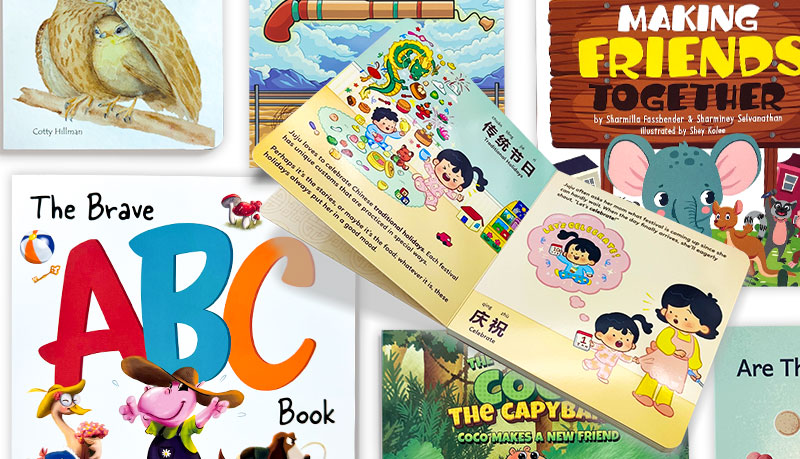
Never mind the so-called digital revolution and the ascendance of the eBook. When it comes to raising our kids, most of us know what’s good for them — and psychologists agree — and that’s a beautifully illustrated, tactile, full-color board book. It’s not just the book itself that younger children love — although they do love to reach out and touch the images and to turn the pages — but the close ‘together time’ they enjoy with the parent or elder sibling who’s reading the book to them while they’re snuggled up in a warm, loving embrace.
And let’s face it, it wouldn’t be the same with a tablet or a smartphone. According to a recent article in Publisher’s Weekly, children’s board book sales aren’t only stable, but increasing annually. They’ve named this phenomenon, the “board book boom”. So, if you’re thinking of self-publishing a children’s board book, now could be the ideal time.
Here at QinPrinting we have decades of success under our collective belt, helping indie authors just like you realize their ambitions. We’ve got a ton of experience creating beautiful board books for first time authors, experienced self-publishers, and other independent creatives. Our team of friendly book design and printing experts is always on hand to help and advise you every step of the way. But first, let’s take a deeper dive into exactly what’s involved if you’re thinking about how to self-publish a children’s board book.
How do I self-publish a children's book?
This is the first question to ask, for sure! There’s a lot to it, so settle in. The stages of self-publishing a children’s board book are several and often you’ll need to do more than one at the same time. But to get us started, as a rough guide, here’s what’s involved. Take a few moments to study this list, then we’ll dig down into the helpful details in the rest of the post:
- Research the market
- Brainstorm ideas and choose a great one
- Write the text and develop the artwork
- Editing and proofreading
- Beta-testing on readers old and young
- Final revisions
- Choosing paper, finishes, and other technical stuff
- Preparing print files
- Checking a sample or prototype
- Ordering a print run
- Setting up distribution and sales channels
- Marketing and promoting your book
Now, this is only roughly the order in which you’ll do these things. For example, as soon as you’ve settled on your best idea and started to work on the story and the artwork, you should already be marketing and promoting your book—either through your website and blog, social media, a crowdfunding campaign, traditional advertising, or all of these and more. Likewise, you’ll want to start planning distribution channels well in advance of ordering a print run. But you’ll discover this along the way. The list will give you a good idea of what’s involved in self-publishing a children’s board book. Now let’s get down to the nitty-gritty.
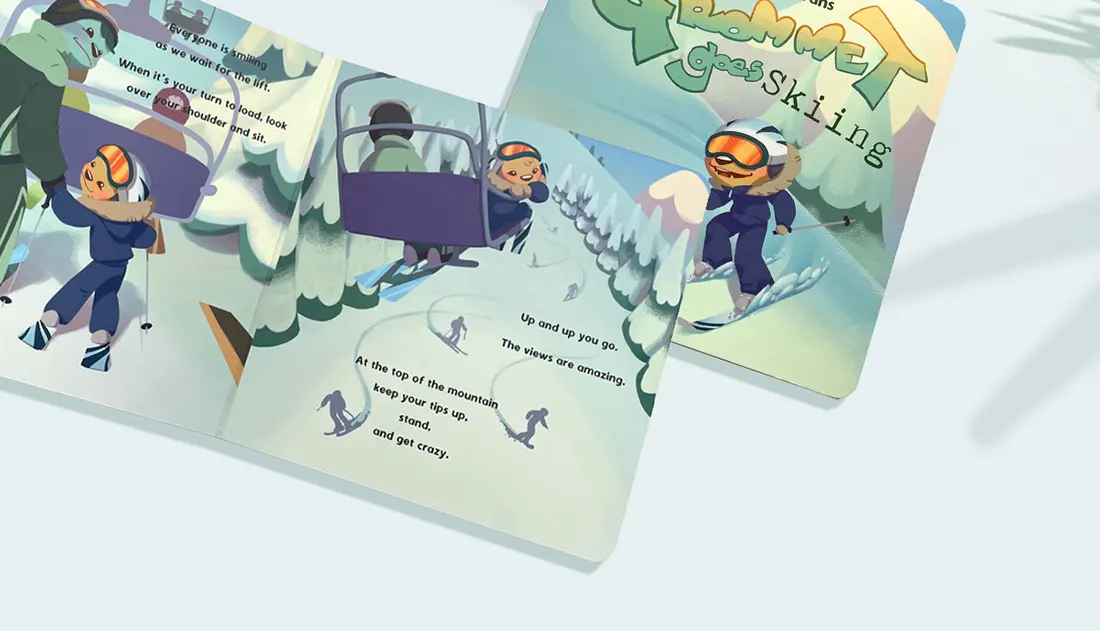
Pros and cons of self-publishing a children's board book
Self-publishing is a very popular option for many authors these days. It’s not necessarily the easiest choice, but with the right knowledge, resources, and hard work, there’s no reason why you shouldn’t make a success of it. But it’s vital to know what you’re getting into to make sure that it’s the best route for you. So, let’s take a quick look at some of the pros and cons of self-publishing compared to traditional publishing.
Pros:
- You are in control of every aspect of your publishing project
- You don’t need an agent and you can publish as often and as much as you want
- You can build your own fan base and sell directly to them through your email list
- You keep all profits — no agent’s cut (usually about 20%) to pay or publisher’s ‘advance’ to work out before you get royalties
Cons:
- You’ll need to have enough money in your budget to get started as you’ll be responsible for paying an editor, illustrator, printer, and marketing costs
- You’ll need to learn how to market and distribute your book after you’ve published it, which can be a steep learning curve
- If you aren’t successful, there’s no-one else to blame — or pick up the checks!
But if you’ve done your due diligence and got all the basics in place — and a budget that will cover your setup costs — you stand as good a chance of selling your book as anyone. And even if you had an agent and publishing deal, there would still be no guarantee that you’d be successful. But, before you take the leap into self-publishing, it’s worth understanding each step you must take to give yourself the best chance of winning. You should start with a little market research.
Who are you writing for?
Yes, for children. But to really understand who your book is for—which will help you both write and market it—you need to drill down into the specifics. Which children? How old are they? What sex or gender(s)? What part of the world? Knowing exactly who your audience is makes it much easier to write a book that’s likely to sell and easier to market the book once it’s published. If you want to publish a board book, then your audience will be babies and younger kids up to, say, five or six years old. It may be helpful to answer the following questions:
- Do you have experience with this age group?
- Have you looked at lots of similar books to get an idea of what’s popular?
- What will make your book stand out from the rest?
It’s also worth thinking about parents, teachers, and librarians; as these are the people who actually select and buy books for that age group. Ask around your friends and colleagues and drop in at your local library to find out what they’re looking for when choosing books for young kids. Make notes, pick up as many books in that field as you can from the library, the bookstore, the thrift shop, friends, and friends of friends. This is all a vital aspect of researching your market and collecting inspiration, too.
Writing and editing your book
Now you know who you’re writing for and what they want from a children’s board book. You’ve got a great idea that you’re sure will be a success. So, you’re ready to write.
As you know, board books for children usually have simple texts; often, just a few words — and no more than a couple sentences — on a page. It’s the illustration that does most of the work. But writing even a simple text is a skilled job.
Many say that writing for young children is harder than writing for older kids or adults because you have so few words to play with and each one has to be just right. For that reason, you will want to get your story critiqued by an experienced, professional editor and make any changes before you commit to publishing.
Hire a professional children's illustrator and layout designer
You may be a talented artist and plan to do your own illustrations. But if not, you’ll need to research and hire a professional illustrator with experience in the children’s book market. A good illustrator will show you a portfolio of their past work so that you know their style is right for you.
They’ll also read your text and discuss your vision for the book. Then, once they know what you want, they’ll provide you with ‘roughs’ — usually black-and-white sketches — so you can see and approve the artwork before they go ahead and make finished pages. Many children’s illustrators still work with traditional materials, while others work with solely digital applications. But either way, you’ll need appropriately formatted digital files to send to your printer along with the layout. For the layout, unless you’re already savvy with the software, you’ll need a designer.
Print your book
Many self-publishers — especially when they’re just starting out — use all-in-one services such as Amazon’s KDP, Draft2Digital, or IngramSpark. But none of those services offer the possibility of publishing high-quality professional board books. So, you’ll need to select a custom offset printing service — we wave and say hello! — to print your book for you. It’s usually cheaper in terms of cost-per-unit to use a traditional printer in any case.
At QinPrinting, we recommend getting your printer involved early on so that they can collaborate with you and your designer to make sure that the files you create are print-ready and everything goes without a hitch. Once we’ve received your files, we’ll make and send you a ‘proof’ copy of your book so you can check it. Once you’re satisfied that it’s all perfect, we’ll print your books, wrap them, and ship them to you. If you prefer, we can store them for you and ship them to you in smaller batches as you need them.
Market your book
This is arguably the toughest part of publishing and where the work really starts. If you’re smart, you’ll start working on the marketing side before you go to print. As a self-published children’s author, you may want to consider:
- Making a website with lots of content targeting your audience; so, a blog with articles about childcare, education, literacy, early years development, play theory, parenting, etc. Make sure that you either host a store on your site or link to your books wherever they are available to buy
- Getting your books in the most popular online marketplaces such as the Amazon store, eBay, and Etsy
- Getting active on social media to promote your books
- Contacting kindergartens, mother-and-toddler groups, schools, and libraries to organize visits
- Paying for advertising space in relevant offline and online publications
- Asking local independent bookstores if they will stock your book
It can be a steep learning curve if you’ve never done any marketing and sales before. But if you want to sell your book, you’ll need to start somewhere. It’s also a good idea to start working on your next book as soon as possible. The more books you have available, the greater your visibility in the marketplace and the more sales you’ll make.
Is it hard to self-publish a children's book?
It isn’t hard to self-publish a children’s book. But most authors will tell you that the real challenge lies in marketing your book once it’s printed and published. That’s why we recommend getting your marketing plan in place even before you publish the book. And be patient. It takes months, even years, of hard work to build up an audience. Few authors see immediate success with their first and only book. To make it as a self-publishing author you’ll need a lot of determination. But if you keep at it and keep publishing — assuming your books are good — you will eventually build a business as a self-published author.
5 design tips for creating a beautiful children's board book
1. Spreads and page counts
Most board books for kids have between 14 and 32 pages. But because they open flat with two pages simultaneously visible with every turn, it’s best to think — design-wise — in terms of spreads. You can have, for example, illustrations which are continuous over each spread (two-page set). Your designer should know to set up the layout as facing pages and then export the PDF print files as spreads.
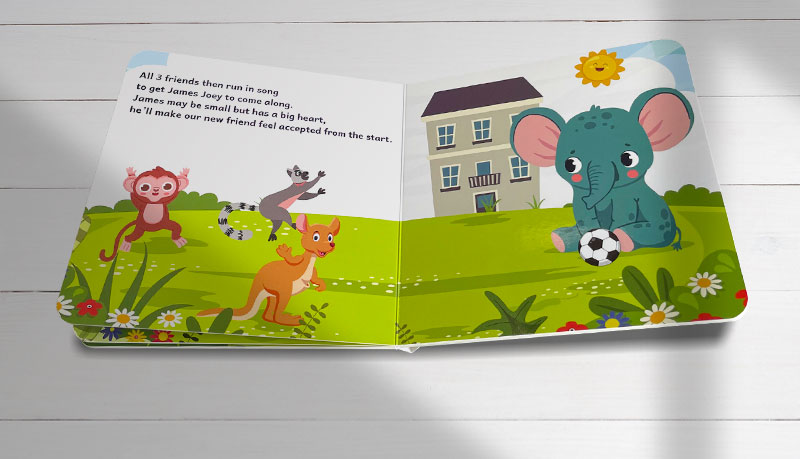
2. Small is beautiful
A six-inch square is an excellent size for a board book. Why? Because it’s large enough to make the illustrations and text easy to see and read, but small enough for little hands to hold. By all means experiment with other possibilities, but on the whole, when it comes to children’s board books, small is usually not only beautiful but more practical, too.
3. Board book covers
The front face of the first board and the back face of the last board constitutes the ‘cover’. So, your designer won’t count those two faces, front and back, in the spread layout, but should make a distinct cover file which will include the spine as well. We can provide you or your designer with a custom template based on the kind of board you’ve chosen and the number of spreads you have. This template will allow for the spine width, the hinge, and the bleed.
4. Convert your color space from RGB to CMYK
Digital images — the ones you see on your computer screen — use a color system called RGB (red-green-blue). But physical ink printing uses a color system known as CMYK (cyan-magenta-yellow-black). So, your designer will need to convert the color space before sending print-ready files. Exactly how that’s done depends on the software, but it’s usually straightforward with a few simple clicks in settings. Always use 100% black for the text — if it’s black — as making black text from color mixes can lead to halo effects round the edges of the letters.
Safe design for board books
Safety is important for children’s books. For example, think about having the pages cut with rounded off edges. And never use plastic laminates — which can peel and be eaten! — but opt for a UV gloss coating instead.
To get all the technical details such as sizes, paper types, weights, printing methods, special finishes, and prices for printing a children’s board book along with handy tips on preparing your text and artwork, check out our main page, Children’s Board Book Printing.
Ready to self-publish a children's board book?
Get in touch with our friendly team of experienced experts for a no-obligation chat about your project or a quote. After close to 30 years of success in the industry, we know what we’re doing in this highly specialized process and have all the latest technology to hand. We take customer care seriously and will guide you every step of the way to producing a truly beautiful, competitively priced board book. Your success is our success. Talk to us today. Shoot us an email to [email protected] or call us at +1 951 866 3971 and we’ll be delighted to discuss your needs, answer your questions, and help in any other way we can.





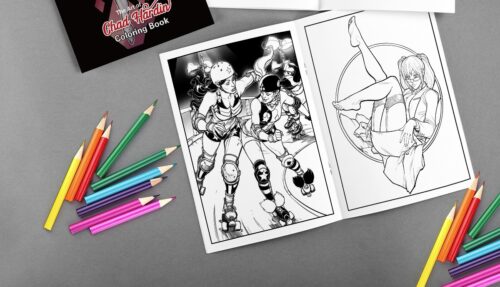

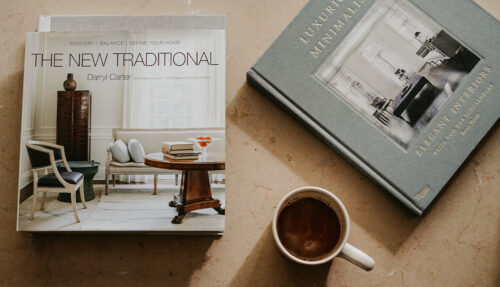
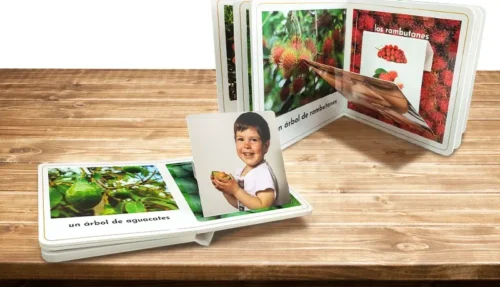
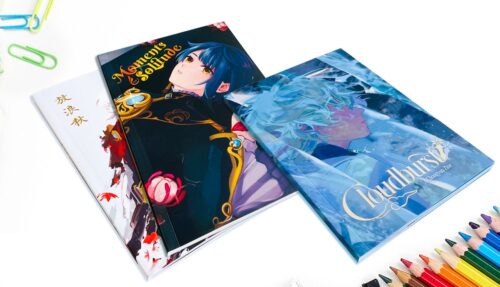
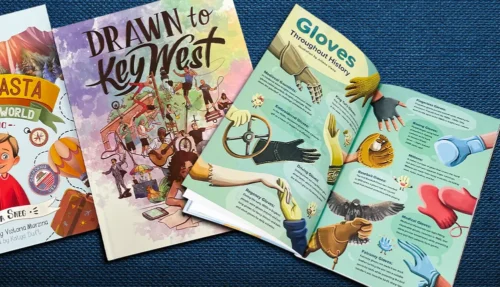
2 thoughts on “How to Self-Publish a Children's Board Book”
I have a board book story that is hand written. I would like it to be 6x6 or 6x7 but I need an illustrator. Plus I want Mylar mirrors on two pages. How can I put this together?
Hi Rebecca, thanks for reaching out. This sounds like a great project and certainly something we can help you with. We got an email from you, so one of our experts will get back to you soon. We look forward to working with you on your board book! 🙂